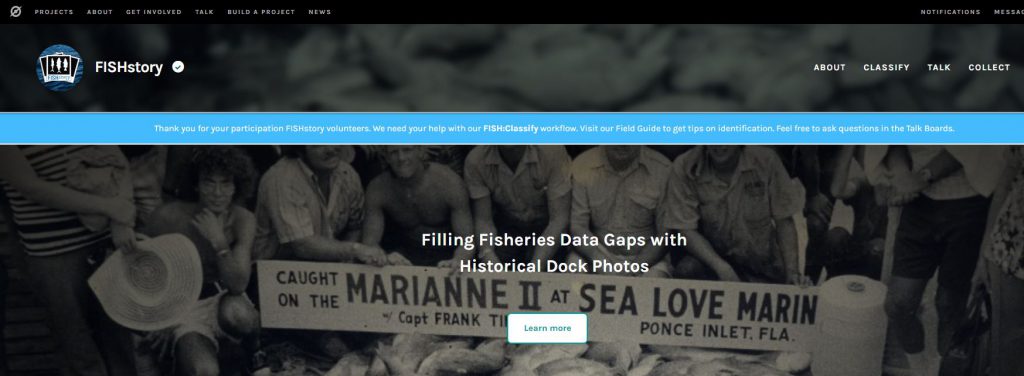by pmdavis | Jun 11, 2021
 Get your red, white and blue decorations out to celebrate Flag Day 2021. According to History.com Flag day began in 1885 when Bernard Cigrand, a Wisconsin teacher, who led his school in the first formal observance of the holiday. Both President Wilson, in 1916, and President Coolidge, in 1927 issued a presidential proclamation asking for June 14 to be observed as National Flag Day. In 1949 congress approved the nationals observance for the United States Flag to be honored in commemoration of the flag’s adoption June 14, 1777. Since that adoption there have been 27 different versions of the flag.
Get your red, white and blue decorations out to celebrate Flag Day 2021. According to History.com Flag day began in 1885 when Bernard Cigrand, a Wisconsin teacher, who led his school in the first formal observance of the holiday. Both President Wilson, in 1916, and President Coolidge, in 1927 issued a presidential proclamation asking for June 14 to be observed as National Flag Day. In 1949 congress approved the nationals observance for the United States Flag to be honored in commemoration of the flag’s adoption June 14, 1777. Since that adoption there have been 27 different versions of the flag.
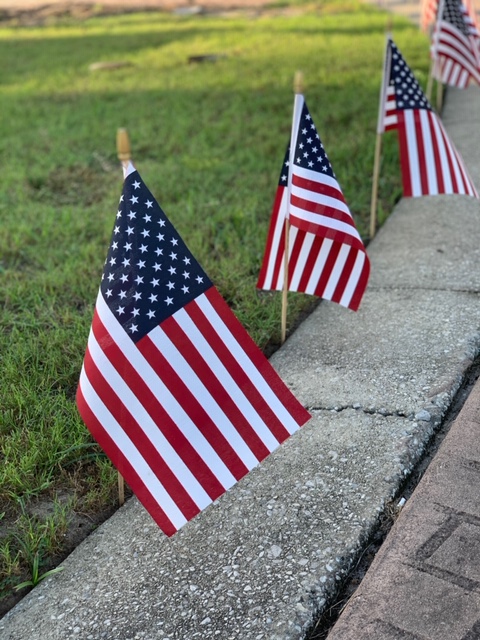
Celebrate our Freedom
Why is flag day important? The American flag serves as a symbol of our nation and tells the story of America. It represents the freedom, perseverance, and growth of the United States. As a national symbol, it has rules that go along with the display and use of the flag. These rules are part of the U.S. Flag Code. The flag code is a set of rules and regulations that defines ways in which we give respect to the American flag. It includes how we should display, handle, care for, and dispose of the American flag. Our observance of this code is considered flag etiquette. Knowing these rules and the history of the American flag will help you demonstrate your patriotism and respect toward the sacrifices made for our country and freedom.
Displaying the flag
We would like to take this opportunity to share some important tips for displaying the American flag, and help you be a responsible citizen by knowing how to properly fly the stars and stripes. In inclement weather, the flag should not fly unless it is an all-weather flag. At night, lighting requirements are necessary, or the flag can only be displayed from sunrise to sunset. If the American flag flies with other flags, they cannot be larger or raised higher than the American flag. Additionally, the American flag should always be the first raised and the last lowered and should never touch the ground. Also the flag should never be carried horizontally, but always aloft and free.
In a time of national mourning, the flag flies at half-mast. Half-mast is when you position the flag below the top of the staff – the exact measurement determined by the position of the flagpole. Doing so is a mark of respect for those who have lost their lives. Times when you fly a flag at half-mast include days like Memorial Day, Patriot’s Day, Veterans’ Day, and in the event of a death of a member or former member of the government. There are sites to receive alerts of when to fly half mast. The U.S. Defense Department says the flag should only be flown upside down “to convey a sign of distress or great danger.”
Presenting, folding, & storing the flag
Presentation of the American flag at an event also has requirements. One of the requirements includes removal of your hat during the flag presentation, raising, or lowering as a sign of respect. The same is true for reciting the Pledge of Allegiance. If an American flag is present on a stage or during a speech, correct placement is ahead of the audience on the stage and to the speaker’s right as he/she faces the audience. There are rules how to properly store the American flag. The proper folding of the American flag is in the shape of a triangle with the union (blue spangled section) visible. Folding the flag is tricky, but Indiana 4-H has a great flag folding activity that helps youth and adults gain practice. This activity teaches the step-by-step process on how to properly fold the American flag. There are some tips that you want to keep in mind while learning or teaching how to fold the flag. It takes two people to fold the flag, and each person should start by holding the short sides of the flag, helping make sure that the flag is tight. When folding, you want to fold the flag in half lengthwise two times before you start “cornering.” Cornering is when you start to fold the flag into triangles, beginning at the striped end of the flag. Once you have it properly folded triangularly you will want to store it in a well-ventilated area to keep it dry in order to prevent mildew. Remember, When storing the flag, it is important to keep it dry, folded properly and on an elevated shelf or surface so it will not touch the ground.
Caring for the flag
You may want to consider ways to make your flag last longer. Often, the flag might just need a good cleaning or a minor repair. Ways to increase the longevity of your flag include getting it cleaned, taking it down during bad weather, and making minor repairs as soon as you see damage. The American Legion says you can wash your flag at home or take it to the dry cleaners. If you choose to wash at home, mollymaid recommends using a mild detergent and either hand washing or on the delicate cycle with cold water. Dry the flag by hanging it on a clothesline or letting it lay on a flat surface.
You need to retire a flag or remove it from service when it is in a condition of being worn beyond repair, has large rips or tears and is no longer a fitting emblem for display. It is important to retire the American flag a respectful manner. There is a protocol for flag retirement, providing a dignified way of destroying American flags no longer fit for display. The preferred method of disposal is a flag retirement ceremony. There are several organizations within local communities who collect and perform these ceremonies, such as American Legion, Veterans of Foreign Wars, 4-H Camps, Boy Scouts and more.
Flag retirement
If you want to dispose of the flag yourself, you can do a retirement ceremony by burning the flag or by recycling it. The protocol for a burning ceremony is to have a fire that is large and intense enough to burn the flag completely. The steps include placing the flag on the fire while observers salute the flag, recite the Pledge of Allegiance, and have a moment of silence. Upon completion, safely extinguish the fire. Beware of burning synthetic flags, such as nylon, can produce dangerous fumes. If you have a synthetic flag consider a different method of retirement like recycling your flag. To do this, cut apart your flag by separating the 13 stripes and leaving the union (blue spangled section) intact. Once cut off, the flag is no longer the official flag allowed for disposal of the parts. Upon the completion of the recycling, you can do a brief ceremony paying tribute to the stars and stripes before sending it off. We encourage you to take the fabric scraps to any local textile recycling drop-off.
Flag etiquette is not a typical classroom lesson, but it only takes a moment to learn the various regulations under the U.S. Flag Code. We encourage you to take time yourself to find more information to help further your knowledge and understanding of the flag etiquette. There are many great resources that are available online:
From this article, we hope that you learned of the importance of the life cycle of the American flag. When and how to properly display, store, care, and dispose of this national symbol. Enjoy Flag Day in 2021 and show your pride in our county by showing proper respect for the American flag and displaying it proudly or by displaying the Red, White and Blue in front of your house!
Written by Zyreshia Jackson and Paula Davis
by pmdavis | Nov 10, 2020

Courtesy photo from https://media.defense.gov
When you think of military service, what words come to mind … training, deployments, relocation, freedom, service, and sacrifice? One word that most people overlook is… Family! According to National Child and Traumatic Stress Network “November was first declared as Military Family Month in 1996. Since then, November has been a time to acknowledge the tremendous sacrifices our military families make. They contend with separation from their families and make adjustments to new living situations and communities. Military Families embody strength, resilience, and courage. Care of military families and children sustains our fighting force, and strengthens the health, security, and safety of our nation’s families and communities.”
Help 4-H recognize the Military Family this month. Many of us live in a community with active duty military families, and almost every community has a Guard or Reserve family that you may not realize are service members. These individuals have a different job in the community and serve in times of need.
For those of us without a military background, it can be difficult to know how to be supportive. You may want to meet military family’s needs but don’t know where to begin. Therefore, we have put together a few ideas to help you on your supportive journey.
- Create something decorative to cheer up a veteran’s nursing home room. Picture, Mandala, Bookmark
- If you have a new military family come to your community welcome them to the neighborhood or school. Help them find their way around, give them a list of best places in your community and your phone number in case they need help.
- Leave a care package with family friendly activities and self-care items. Operation Gratitude and Operation Care & Comfort are two organizations that do this for military members.
- Volunteer to babysit or take a child to a practice and give the military parent a break especially if one of the parents is deployed. Just having someone they can trust offer help is a big gift!
- Volunteer your time to provide companionship, serve a meal, assemble holiday packages. Veterans’ advantage has a list of trusted organizations and nonprofits if you don’t have a person in mind.
- Deliver a meal or prepare something that they can take from the freezer and put in the oven or microwave as a quick meal.
- Send a thank you note expressing your appreciation for the family’s support of our Military.
- Offer to cut grass, clean, or help with household chores.
- Offer to run errands – doing a grocery run, picking up dry cleaning, and other errands can ease the burden of juggling responsibilities while a military member is deployed.
- Adopt a family for the holidays. Holidays can be hard when a service member is deployed or doesn’t have family in the local area. Include military families in your holiday plans – holiday dinners, festivals, baking, etc. If you do not have a family locally Soldier Angels can help you to adopt a family.
- Treat a service member or veteran to a holiday stocking filled with items to bring them some cheer. If you don’t have someone in your local area, Soldiers Angels Stockings For Heroes is a national organization doing this. https://soldiersangels.org/holiday-stockings-for-heroes/
- Offer to board a military family’s pet while the family goes on vacation or takes a trip. Dogs on Deployment or PACT Military Foster Program
- Donate to local or national military support programs or gift your airline miles to Hero Miles Program. It supports wounded, injured, and ill service members and/or their families who are undergoing treatment at a medical facility.
We hope you and your family will consider doing something to recognize our military families this month. Also, if you have a family with kids, take them to visit a war memorial and discuss the meaning of service and sacrifice, and that this is something to remind us of the people who served in and died as a result of war. Help them understand the sacrifices of our military families to make our lives better and ensure our basic freedoms. I have been told by friends who are military families that even the “little things” can make a big difference to a military family. Please join us in celebration of National Military Families Month by adopting or supporting a military friend or support organization in 2020.
Written by Jennifer Sims and Paula Davis

by pmdavis | Aug 7, 2020
4-H members and volunteers are always seeking new ideas for hands-on learning experiences as service activities to positively impact our communities. With covid-19, some community service opportunities have been limited due to social distancing and other restrictions. However, the South Atlantic Fishery Management Council and Florida Sea Grant have a new opportunity for 4-H members to get involved virtually. This opportunity is a citizen science project that would be a great way to build your community service hours and learn something new about fish in the process!
Are any of you into history, helping with research, and like fish? If you answered “yes” to any of these, please consider working with the FISHstory Project! The South Atlantic Fishery Management Council and Florida Sea Grant needs help with a citizen science project to help fill gaps in fisheries data using historical dock photos.
Who can participate? Families and youth ages 16+, or younger youth with an adult mentor who is working with them for the sessions. If you are under the age of 16, you will need your parent to register with you. It is a very simple registration process. First, register for FISHstory at https://scistarter.org/fishstory. Then, click on the https://safmc.net/safmc-fishstory/ link to begin helping count and identify fish in the historical photos.
This project will train you as a citizen scientist to identify and count fish using historic fishing photos from the 1940-1970s, prior to when dedicated catch monitoring began. This is a two-part project. The first part is to simply count the number of fish in the photo. The second part is to identify the fish in the photo. Everything is done online using Zooniverse, so there would be no travel or cost to participate in this project.
Data collected with your help will provide a picture of the fishery in the earlier years. This will help scientists understand the fishing industry prior to dedicated monitoring programs. It will also help improve our understanding of the fishing of several iconic species over the years. This data will be used to help accurately estimate stock productivity from 1940 to 1970 when for-hire fisheries off the Atlantic coast of Florida were gaining popularity. Your help is needed to fill these data gaps to help evaluate assumptions about stock productivity. The historic photos, untapped sources of this important biological data, can help do just that. Analyzing the photos will help provide better information of what people were catching during this time period, seasonality of their catches, and possibly estimate a rough catch per angler, which can provide insights on the health of fish populations during that period.
4-H helps youth to learn the skills needed to lead the positive change in their communities like this one. This is done through hands-on learning opportunities that explore citizenship, community development, and personal growth. For more information on community service projects or other 4-H programs that build essential life skills in youth, please contact your local UF IFAS County Extension Office, or visit http://florida4h.org.
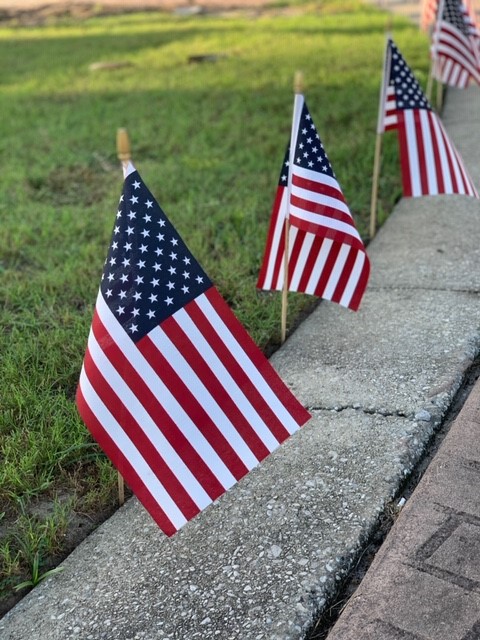
by pmdavis | Jul 3, 2020

Celebrate our Freedom
The boom of fireworks, an outdoor concert, a lively parade, the smell of hot dogs on the grill, sweet cold watermelon slices, and a day spent with friends and family, for many, this is what the Fourth of July means. We get so busy enjoying the celebration that we often forget to stop and reflect what the holiday is about.
The Fourth of July is a celebration of independence from British rule and the formation of America. The holiday has been celebrated since 1776 and became an official federal holiday in 1870. The succession from British rule and creation of the Declaration of Independence would not be possible without the formation of a military. In the United States, we are fortunate to still enjoy the freedoms awarded though the Revolutionary War (and military) and work of the Continental Congress. These Founding Fathers of the U.S. paved the way for independence, but our dedicated service members and their families work every day to ensure that our freedom and independence continues. No one loves their country more than a Soldier, Airman, Marine, Coast Guardsman or Sailor; they are willing to sacrifice all to protect and preserve our freedom. They are passionate about their mission and give all they can to serve the U.S. and her citizens.
In a discussion of what Independence Day means to military members, SSgt. Quade, USMC (Vet), states “Military wide, Independence Day is one of the most quintessential days of the year. Not only because of the signing of the Declaration of Independence, but that signature represents the freedoms and liberties that were fought for by all brothers and sisters of all branches and earned through blood, sweat, and tears.” It was interesting to hear his perspective and learn that Independence Day is celebrated all over the world by U.S. Military members – maybe not always with fireworks, but a group picnic-style lunch with hotdogs and hamburgers.
We also have to recognize the many sacrifices made by the military members that affect their family, such as missed birthdays, holidays, family functions, and milestones. What makes the time away tolerable is knowing that back home the active duty spouse is stepping up to the plate and taking care of the family. Children assume different roles within the family to help keep the household running and provide support. Military families are resilient and fluid, adjusting to relocation and changes in family dynamics.
This year, as you celebrate the Fourth of July, I hope you enjoy fireworks, grilled hot dogs, and a cold slice of watermelon. During your celebration, I encourage you to take a moment and thank military members and their families, many who are 4-H members, for their efforts and sacrifices in protecting our freedoms so we can enjoy independence every day.
UF/IFAS Extension and 4-H are proud to be a part of the military family – 4-H works with military youth centers across the nation and overseas to create some consistency for youth in these situations. For more information about the 4-H opportunities available in your county, please contact your local UF IFAS County Extension Office, or visit http://florida4h.org.
Special thanks to Jennifer Sims, 4-H Military Partnership Coordinator, UF/IFAS Bay County, for providing this article and picture.
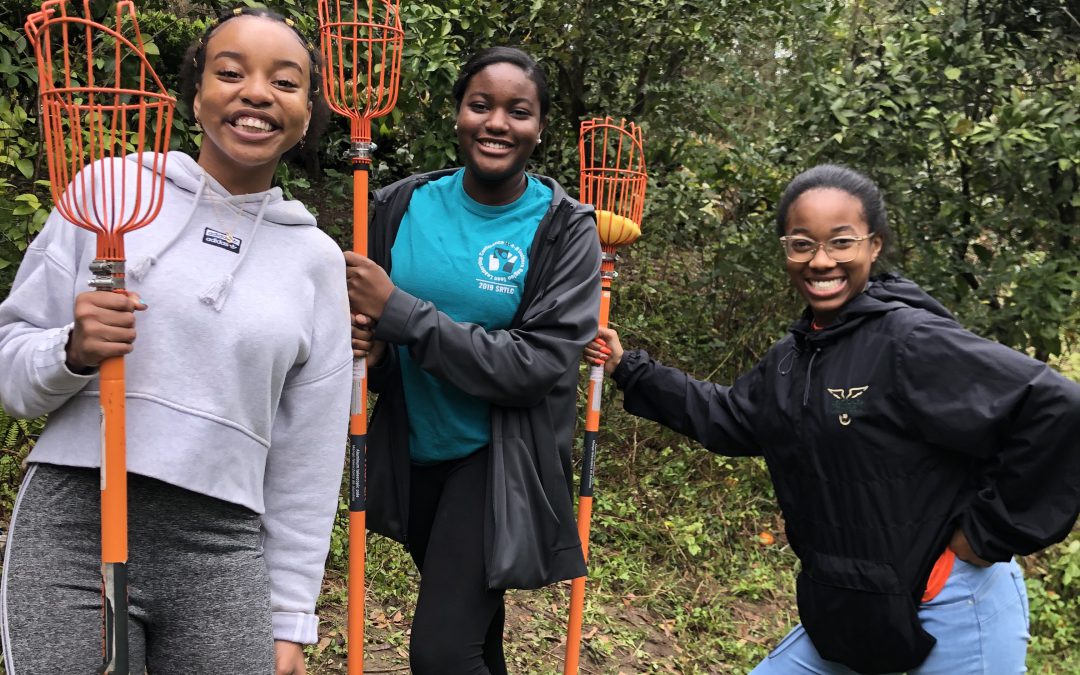
by Allison Leo | Mar 20, 2020

Valentines Day Cards for the Tallahassee Senior Center
From participating in a park clean up to sewing dog beds for the local animal shelter, many 4-H members are actively involved in community service projects as part of their 4-H club experience. 4-H members pledge their hands to larger service, making community service an important part of club membership. 4-H has historically given back to the community by encouraging young people and adults to volunteer. Giving back to the community allows members to learn the value of helping others, develop leadership and communication skills, feel empowered, grow their decision-making skills, and much more.
But, are these members involved in service-learning? What is the difference between a community service project and service-learning? How can you turn a club community service project into service-learning?
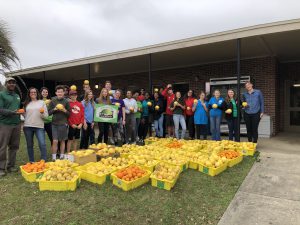
Leon Camp Counselors collected over 1,300 lbs of produce.
COMMUNITY SERVICE
Community service is work done by an individual or group that benefits others. This work is typically done in your own community, to directly benefit the members in your community. Examples of this type of service are conducting food drives, planting a community garden, creating holiday cards for nursing home residents, or helping serve meals at a shelter.
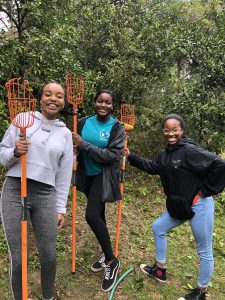
Leon teens took a break from gleaning to pose for a picture.
SERVICE-LEARNING
Compared to community service projects, service-learning is a method of teaching youth that fosters a deeper connection to the project. Service-learning merges a meaningful community service project with purposeful learning and reflection. Here’s an example: if youth serve lunch to veterans, they are providing a service to the community and that is considered a community service project. For that same project to become a service-learning project, additional learning and reflection opportunities are included. Youth would be involved in the planning process and would work together to select the service-learning project based on the needs of a community. Before serving lunch to the veterans, youth could learn about the challenges and issues facing veterans in the community from a guest speaker or they could conduct research independently to present at a club meeting. After the project, youth reflect on the experience of serving lunch to the veterans and share any feedback or results with the community.
Successful Service-Learning Projects Include Four Steps:
Step 1: Assess
Club members work together to identify and assess needs in their community. Youth can have a brainstorming session or take a club field trip to assess needs in-person. After identifying multiple needs, club members will take a vote on the best option for their service-learning project.
Step 2: Plan
This step will take the most time. It is important to schedule the appropriate amount of time to plan the project. This can occur during a club meeting for small projects or over the course of multiple meetings for larger projects. Use the information gathered during step 1 to develop a plan, timeline, list of supplies and roles and responsibilities for each team member. It is a good idea to identify potential problems that might occur. Safety and risk management procedures will need to be addressed during this step. Club volunteers can guide this youth-led process, but it is important to let club members take the lead in planning.
Step 3: Conduct Service Project
Time to complete your service project! The day of service is rewarding and exciting. Make sure you have the supplies needed and roles are assigned appropriately.
Step 4: Reflection
During and after the service project, it is important to pose reflection questions to the group and individuals. This allows youth to think about their project and draw a connection to the bigger picture. Why is the service being completed important? What have you learned from it? Has it taught you a new skill or changed your mindset about something? Most importantly, now that you have learned from the project, what are you going to with your new knowledge? Reflection can be through group discussion, journal writing, photographs, or multimedia presentations.
For more information on service-learning projects or other 4-H programs that build essential life skills in youth, please contact your local UF IFAS County Extension Office, or visit http://florida4h.org.
 Get your red, white and blue decorations out to celebrate Flag Day 2021. According to History.com Flag day began in 1885 when Bernard Cigrand, a Wisconsin teacher, who led his school in the first formal observance of the holiday. Both President Wilson, in 1916, and President Coolidge, in 1927 issued a presidential proclamation asking for June 14 to be observed as National Flag Day. In 1949 congress approved the nationals observance for the United States Flag to be honored in commemoration of the flag’s adoption June 14, 1777. Since that adoption there have been 27 different versions of the flag.
Get your red, white and blue decorations out to celebrate Flag Day 2021. According to History.com Flag day began in 1885 when Bernard Cigrand, a Wisconsin teacher, who led his school in the first formal observance of the holiday. Both President Wilson, in 1916, and President Coolidge, in 1927 issued a presidential proclamation asking for June 14 to be observed as National Flag Day. In 1949 congress approved the nationals observance for the United States Flag to be honored in commemoration of the flag’s adoption June 14, 1777. Since that adoption there have been 27 different versions of the flag.



